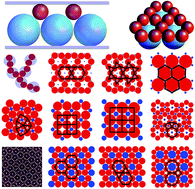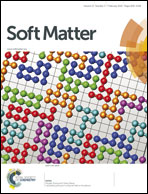Non-additive simple potentials for pre-programmed self-assembly
Abstract
A major goal in nanoscience and nanotechnology is the self-assembly of any desired complex structure with a system of particles interacting through simple potentials. To achieve this objective, intense experimental and theoretical efforts are currently concentrated in the development of the so-called “patchy” particles. Here we follow a completely different approach and introduce a very accessible model to produce a large variety of pre-programmed two-dimensional (2D) complex structures. Our model consists of a binary mixture of particles that interact through isotropic interactions that enable them to self-assemble into targeted lattices by the appropriate choice of a small number of geometrical parameters and interaction strengths. We study the system using Monte Carlo computer simulations and, despite its simplicity, we are able to self-assemble potentially useful structures such as chains, stripes, and Kagomé, twisted Kagomé, honeycomb, square, Archimedean and quasicrystalline tilings. Our model is designed in such a way that it may be implemented using discotic particles or, alternatively, using exclusively spherical particles interacting isotropically. Thus, it represents a promising strategy for bottom-up nano-fabrication.


 Please wait while we load your content...
Please wait while we load your content...